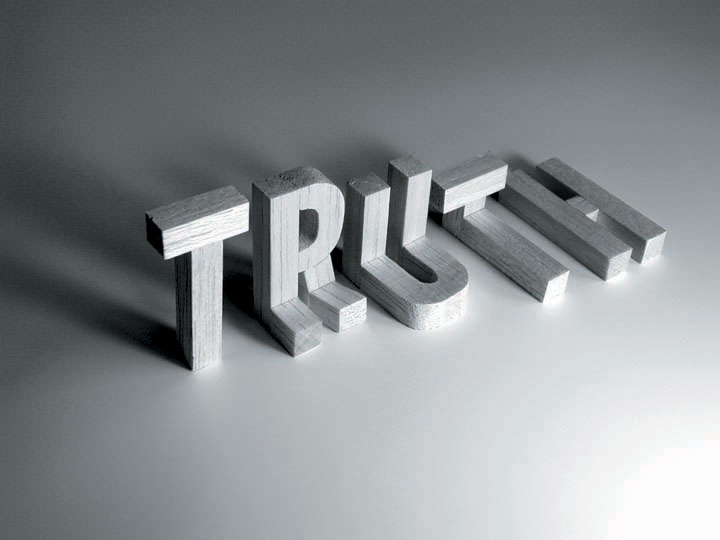Storytelling by Design in a Digital Age
Marsha Trainer chats with Martha Stewart Living Omni, Inc. chief creative & editorial director Gael Towey and her husband, acclaimed designer Stephen Doyle. Both will be at the W Hotel - Foshay on September 9 as part of the "Design Conversations" series.



introductionGael Towey and Steven Doyle know collaboration intimately – as creative designers working together on projects like the hugely successful rollout of the Martha Stewart Everyday collection and also as a married couple raising two children in New York City. Towey, chief creative and editorial officer of Martha Stewart Living Omnimedia, and Doyle, a much-lauded independent designer and principal at Doyle Partners, have moved into cutting-edge modes of communication, embracing the changing digital landscape while maintaining a commitment to quality content transmitted to audiences in gorgeous, yet functional forms.
Their involvement in the W Minneapolis’s Design Conversations is a coup for the series, as their work relates directly to current dialogues regarding the future of design. As a precursor to this Thursday’s event, the two generously took time to answer some questions via email about their lives, projects, and inspiration.
marsha trainerHow has your personal relationship enhanced your work and vice versa?
stephen doyleGael hired me to create a book, and then I married her to create a family. Work and collaboration have definitely infiltrated our home life, and our home life has infiltrated our careers. Being a designer is not something that gets left at the studio at the end of the day. It comes home and watches how you plate the food you’ve just prepared. Our relationship with each other and with design is kind of a three-dimensional, yin-yang of giving and taking, exploring and experimenting, and looking and listening very carefully.
mtHow did you each get your start in design?
sdAs a high school student in the suburbs of Baltimore, I was reading Shakespeare’s Julius Caesar, but the thing I liked best about the book was its cover. It was Milton Glaser’s classic black and white drawing with a fateful touch of red. I decided to be a painter (who had ever heard of design?) and moved to New York to attend Cooper Union. Imagine my surprise when Milton Glaser walked into the room! In fact, Milton’s class was a turning point for me. He co-taught editorial design with Henry Wolf, and the two of them fought like cats and dogs. They never agreed on anything, at which point I realized that this was the career for me, because you could never be proven wrong! There was no right way to do something! How could I possibly fail? Imagine my surprise when Milton hired me to work under him at Esquire!
gael toweyI graduated from Boston University in Graphic Design. I discovered my major accidentally. I thought I was signing up for a printmaking class, but on the first day there was a lecture on Baskerville typeface. I was hooked. I learned about art photography at Viking Press Studio Books, where as a lowly paste-up artist I met Jacqueline Onassis, Irving Penn, Georgia O’Keefe, Alfred Eisenstaedt, and many female photographers, like Barbara Morgan and Laura Gilpin. Next, as an Art Director for Clarkson Potter, I learned about food and decorating while photo editing books for authors, including Martha Stewart. We published about 50 books a year, so I was always looking for freelance designers. I was looking for someone to do Martha’s next book, Weddings, and I called all my favorite designers at the time — Mary Shanahan, Roger Black, and Walter Bernard. They all said to call Stephen Doyle; we were married two years later.
mtHave you always seen your jobs as storytelling?
sdI began as an editorial designer at Esquire and Rolling Stone, so for me design has always been synonymous with storytelling. Next, I experimented with design that was not on the printed page at M&Co., and every album cover, ad, promotion, or invitation was also about telling a story, conveying a mood, convincing a shopper, seducing a client.
mtHow does branding intertwine with storytelling?
gtBranding is about the trust your consumer has in you. Your reader or viewer relies on you for a certain type of experience. We [at Martha Stewart Living Omnimedia] have always used storytelling to convey information and inspire our readers. As editors, we are lucky to be able to tell our stories in ways that meet the readers where they are: they can be entertained on TV, searching for recipes on our website, or reading a blog. Now, they can even experience stories through touch and transformation (in MSLO’s new digital magazine, Boundless Beauty).
mtAs digital options multiply, how have your respective roles changed?
sdGael’s work has led her to the edge of digital options, while I have been sitting back on my pixels and exploring motion graphics as a new frontier. In fact, I plan to use our [Design Conversations] presentation in Minneapolis for the world premiere of my newest work, a three-and-a-half minute animated concrete poem called Infrastructure: 2,248 individually shot frames will come together and tell the story of civilization.
This variety of media platforms give us a new palette to work with and new ways of expressing ideas. But the ideas and information must be solid. Content still has to lead technology.
gtEditorial roles have changed over time. Magazine editors are now in charge of their brands — not just their magazines. Their strategy has to include print, Internet, social media, TV, apps, and, in our case, radio. As we put our first digital magazine together, our magazine editors did research, wrote scripts, and worked with video editors to edit the interviews; our art directors simultaneously commissioned stills and video.
We are using touch functionalities [like those found in the iPad] to create a more experiential type of storytelling. It has been rewarding to work with our still photographers as they evolve their businesses to include video. And, they are doing it in their own style, with small teams. The video in our digital magazine is more personal and more intimate than what you generally see from TV crews — the amazing photography we are known for will come to life for readers and, hopefully, a whole new audience.
mtDo you generate ideas in the same way for these platforms? Or, has the brainstorming process transformed along with the media landscape?
sdThe most interesting part of that question is the first four words, and the answer is resoundingly YES. There are no two ways about it: thinking is just thinking. New options present new opportunities for expression, but it’s knowing what you want to express in the first place that makes all the difference.
gtBrainstorming is more fun as we have a new palette to work with and new ways of expressing ideas. However, the ideas and information must be solid. Content still has to lead technology.
mtStephen, are there any design projects of which you are particularly proud?
sdI have created two pieces of typography of which I am particularly proud, and each was destined for a very public life. The first is the word “truth.” I made it as an illustration for the New York Times Op-Ed page, for an opinion piece by Stanley Fish, who challenged us to consider if there were two ways of looking at the truth. It was right after 9/11 — a very emotionally volatile time for us downtowners. His piece asked, “How is it possible that the people we called terrorists were, at home, being called heroes?” It suggested an upside-down, or opposite universe. I went to my band saw and cut the five letters of the word and allowed them to sequentially fold in half — the “truth” morphed from being right in front of you to being underfoot.
mtDo you find the time for creative expression in your personal lives? I know you cook and entertain — is that an artistic outlet?
sdCooking is such a pleasurable (and social) way to unwind after a tough day at the band saw making type, but I don’t think of it as artistic — hedonistic, perhaps. I still like to make things with my hands, and I have a hobby of cutting up books and rearranging the sentences. After so many years as a designer “solving problems,” I find it very refreshing to go home at night and create ones of my own. I am careful in the evening to keep logic at an arm’s distance. Clarity can be stifling; a puzzle, a koan, a mystery, or a metaphor can be inviting, because it allows you a place to go where you can spend a little time to reflect, the most undervalued luxury in the world.
mtFinally, any impressions of the art/design culture of Minnesota?
sdWe can’t wait to see the H & de M (Jacques Herzog and Pierre de Meuron) Walker Arts Center — it’s been many years. Minneapolis has tons of talent and taste. I think it’s something in the weather, as everyone is literally barricaded inside for months on end — it drives people to distraction. Do you think Chuck Anderson would be inside making clippings from telephone books from 1937 if it were not so cold for so long? Of course not! Do you think Sharon Werner would create such exquisite packaging for 10 Cane Rum if it were pleasant enough to be outside? Never! Extreme weather produces extreme art. We are anxious to visit while it’s warm and see what’s going on out there!
Related event details: The W Design Conversations series benefiting the BrandLab continues Thursday, September 9 with Stephen Towey and Gael Doyle, each of whom will highlight their latest projects: Towey will reveal Boundless Beauty, the new digital magazine from Martha Stewart Living Omnimedia, while Doyle plans to show Infrastructure, an intermedia creation combining poetry and visual art.